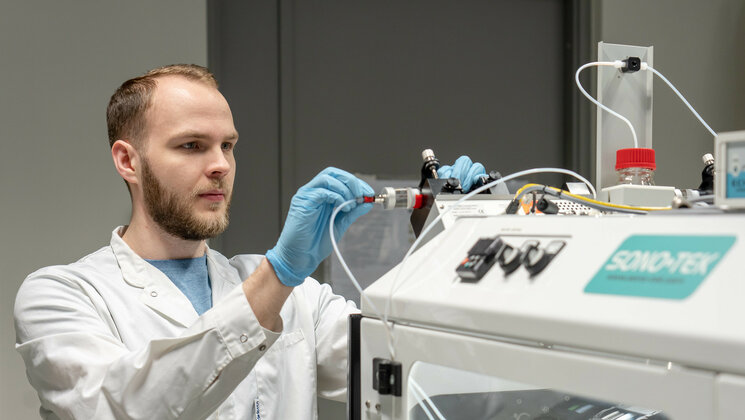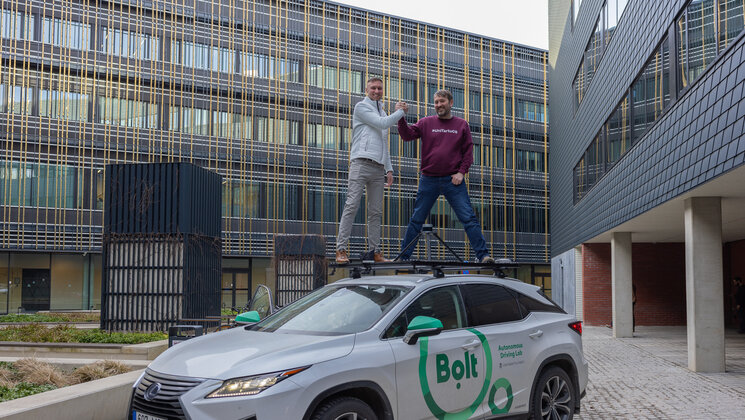Submit your project
On-going and upcoming calls for course projects
Currently all calls are closed. Read more about closed calls so you would be well prepared for the next round.
Closed calls
Student teams of four dedicate ca. 600 hours to develop a software solution: be it a mobile application, a web application or something else entirely.
Call deadline: 02.09.2022
Next call: August/September 2023
Student teams of 3-4 analyze and model (large) data sets to better understand the behavior of the data subjects and help make rational decisions.
Next call: fall 2023
Are there any necessary contracts to be signed?
All agreements and contracts are made between students and the owner of the project. We can only go so far as to point out the primary legal aspects so that both parties would have an understanding of their rights, as stated by the law.
How are intellectual property rights regulated?
Given that your project bears results, a question naturally arises: whose property is this?
In Estonia, copyright is regulated by the Autoriõiguse seadus (AutÕS) aka the Copyright Act. A copyright for any piece of creative work consists of two aspects:
- the moral rights (AutÕS § 12);
- the economic rights (AutÕS § 13).
Copyright is automatically acquired by the author(s) (i.e., the students) upon the creation of their work. Understandably, you as the project owner might want to do as you please with the work once the student project is finished. For you to have legal rights to do so, you must sign a copyright agreement, in which you will agree the terms of use regarding the work created by the student(s).
There are two alternatives for rights to change hands:
- transferring rights – only applicable to economic rights;
- by granting a license (i.e., by giving a right to exercise rights) – applicable to both moral and economic rights;
- by granting a non-exclusive license, the author pertains the same rights as the licensee;
- by granting an exclusive license, the author gives up on the rights entirely (this is comparable to transferring said rights).
Should you wish to have full economic control, you ought to:
- acquire the economic rights;
- acquire a license to exercise the following moral rights:
- make or permit other persons to make any changes to the work, its title (name) or designation of the author’s name and the right to contest any changes made without the author’s consent (right of integrity of the work) (AutÕS § 12 lg 1 p 3);
- permit the addition of other authors’ works to the author’s work (illustrations, forewords, epilogues, comments, explanations, additional parts, etc.) (right of additions to the work) (AutÕS § 12 lg 1 p 4);
- decide when the work is ready to be performed in public (right of disclosure of the work) (AutÕS § 12 lg 1 p 6);
- acquire the right to grant sublicenses which enables the licensee to – in turn – bestow third parties with licenses to use the work;
- acquire a confirmation from the author(s) that they will not exercise the remaining moral rights in a way that would interfere with exercising the economic rights.
What else to bear in mind when signing a copyright agreement?
- To avoid any misunderstandings, all agreements should be made before the collaboration begins.
- A copyright agreement must contain the following (AutÕS § 411 lg 1):
- description of the work (form, scope, name, etc.);
- rights that are transferred, rights that are licensed, the type of licenses (non-exclusive or exclusive), right to granting sublicenses;
- the manner and territory of using the work;
- expiration of the copyright agreement and time of entry into force.
How to ensure data confidentiality?
Supposing that your project involves sensitive data and you want to positively make sure that it does not reach any third parties, it would be wise to sign a confidentiality agreement aka an NDA (non-disclosure agreement).
An NDA should posit the following:
- what exactly is regarded as confidential information in terms of the project;
- how is confidentiality enforced (contractual penalties);
- the duration of confidentiality.



